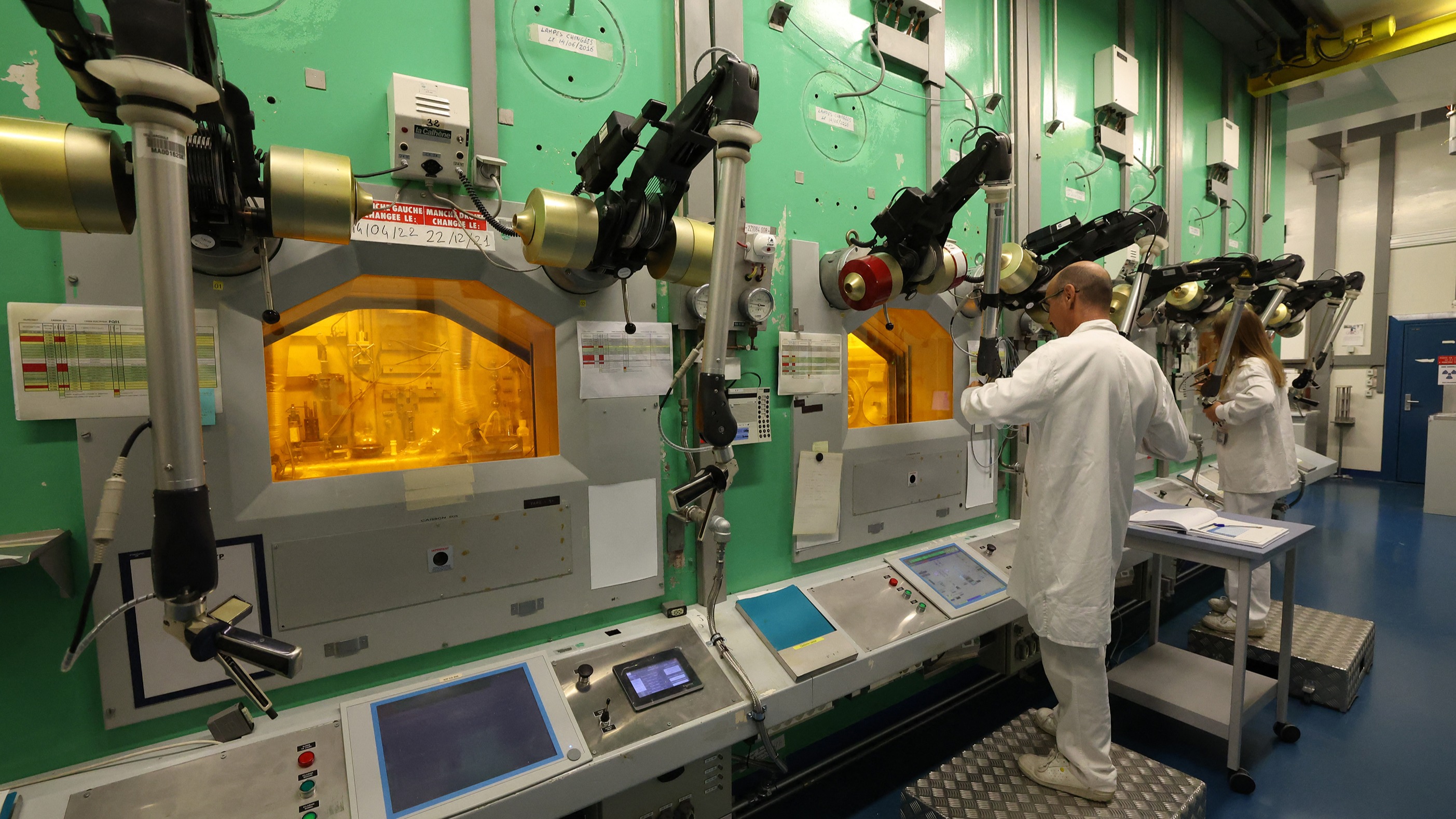Report on California’s Economic Strategy and Alignment with Sustainable Development Goals
Introduction: The California Economic Summit
On October 22, 2025, Governor Gavin Newsom and Director Dee Dee Myers of the Governor’s Office of Business and Economic Development (GO-Biz) addressed the California Economic Summit in Stockton. The discussion centered on California’s economic performance and its strategic initiatives, which demonstrate a strong alignment with the United Nations Sustainable Development Goals (SDGs). The summit serves as a multi-stakeholder platform, reflecting SDG 17 (Partnerships for the Goals), by uniting leaders from various sectors to foster bipartisan collaboration for a sustainable and inclusive economy.
Advancing Decent Work and Inclusive Economic Growth (SDG 8 & SDG 10)
California’s economic policies are fundamentally structured to promote sustained, inclusive, and sustainable economic growth, full and productive employment, and decent work for all, directly addressing SDG 8 (Decent Work and Economic Growth). The state’s approach also targets SDG 10 (Reduced Inequalities) by ensuring equitable opportunities across all regions.
The “California Jobs First” Economic Blueprint
A cornerstone of this strategy is the “California Jobs First” Economic Blueprint. This vision is being implemented to achieve the following objectives in line with SDG 8:
- Support regional growth through a community-driven, bottom-up approach to reduce regional disparities.
- Invest in 21st-century job training to equip the workforce for future industries.
- Create an environment conducive to job creation and business investment.
- Strengthen the state’s innovation economy to ensure long-term competitiveness and access to high-quality employment.
Supporting Key Economic Sectors
Targeted investments in high-value sectors further contribute to job creation and economic resilience:
- Creative Economy: A historic expansion of the Film and Television Tax Credit has been announced, which is projected to generate $1.4 billion for the state’s economy, creating jobs and supporting below-the-line workers.
- Manufacturing: With over 45,000 manufacturing firms, California is a national leader, providing over 1.24 million jobs in critical areas like aerospace and zero-emission vehicles.
Fostering Innovation and Sustainable Industry (SDG 9)
California is actively building resilient infrastructure, promoting inclusive and sustainable industrialization, and fostering innovation, which is the core mission of SDG 9 (Industry, Innovation, and Infrastructure).
Leadership in Future Technologies
The state is positioning itself as a global leader in industries critical to future economic security and sustainability. Key areas of focus include:
- Quantum Computing
- Fusion Energy
- Robotics and Artificial Intelligence (AI)
- Biotechnology
- Space Exploration
Recent legislation to invest in global innovation on university campuses reinforces this commitment. California’s dominance is evident, hosting 33 of the world’s top 50 AI companies and producing 25% of global AI patents.
Commitment to Quality Education and Human Capital (SDG 4)
Recognizing that sustainable development is impossible without an educated populace, California has made significant investments in education, aligning with SDG 4 (Quality Education).
Educational Investments and Pathways
The state’s strategy ensures inclusive and equitable quality education and promotes lifelong learning opportunities for all:
- TK-12 Enhancements: Major investments include creating a new grade (Transitional Kindergarten), expanding before- and after-school programs, and increasing access to student behavioral health supports.
- Nutrition and Health (SDG 2 & SDG 3): A program providing two free, locally-sourced, nutritious school meals for all students supports SDG 2 (Zero Hunger) and SDG 3 (Good Health and Well-being).
- Workforce Development: A $30 million investment targets apprenticeship funding for high-demand jobs in healthcare, education, and technology, complemented by a $25 million investment in skilled trades programs.
Summary of Economic Performance in the Context of SDGs
California’s $4.2 trillion GDP is not just a measure of economic output but a foundation for achieving broad sustainable development. The state’s leadership across multiple metrics demonstrates a successful model for integrating economic prosperity with social and environmental objectives.
- #1 in the Nation: Leads in Fortune 500 companies, new business starts, and venture capital access, indicating a vibrant ecosystem for SDG 8 and SDG 9.
- Global Food Supplier: As the nation’s largest agricultural producer, California plays a critical role in global food security (SDG 2).
- Innovation Hub: Leadership in high-tech industries and AI directly contributes to the innovation targets of SDG 9.
- Trade Powerhouse: With over $675 billion in two-way trade, California’s economy is a vital node in the global supply chain, offering opportunities to promote sustainable practices worldwide.
Analysis of Sustainable Development Goals in the Article
1. Which SDGs are addressed or connected to the issues highlighted in the article?
-
SDG 8: Decent Work and Economic Growth
- The article’s central theme is California’s economic success, with a Gross Domestic Product (GDP) of $4.2 trillion. It emphasizes creating “good-paying jobs for Californians” through initiatives like the “California Jobs First Economic Blueprint” and supporting the creative economy, which directly aligns with promoting sustained, inclusive, and sustainable economic growth and decent work for all.
-
SDG 9: Industry, Innovation and Infrastructure
- The article highlights California’s leadership in “quantum, fusion, robotics, biotech, nuclear, space,” and Artificial Intelligence (AI). It mentions investments in “global innovation on university campuses” and the state’s status as a “Manufacturing Hub” with strengths in aerospace and electronics. This focus on fostering innovation and building resilient infrastructure and industries is a core component of SDG 9.
-
SDG 4: Quality Education
- The article details significant investments in education and training. This includes improvements in the TK-12 system, such as creating a new grade and providing school programs. More specifically, it points to investments of “$30 million into high-demand jobs in healthcare, education, and technology” and a “$25 million investment” for apprenticeship programs, which directly supports inclusive and equitable quality education and lifelong learning opportunities.
-
SDG 2: Zero Hunger
- The article mentions California’s massive agricultural output, stating it “produces nearly half of the country’s vegetables, and over three-quarters of the country’s fruits and nuts.” Furthermore, it highlights a specific policy of “offering all students two free, locally-sourced nutritious school meals,” which is a direct action to end hunger and ensure access to safe, nutritious food for the state’s student population.
-
SDG 10: Reduced Inequalities
- The article describes a “bottom-up, community-driven approach to economic development” that “invests in all corners of the state” to “guarantee every region across the state has the opportunity to thrive.” This strategy aims to promote inclusive growth and reduce economic disparities between different regions within California, aligning with the goal of reducing inequality within and among countries.
2. What specific targets under those SDGs can be identified based on the article’s content?
-
Under SDG 8 (Decent Work and Economic Growth):
- Target 8.2: Achieve higher levels of economic productivity through diversification, technological upgrading and innovation. This is supported by the article’s focus on California’s leadership in high-tech industries like AI, quantum, and biotech.
- Target 8.3: Promote development-oriented policies that support productive activities, decent job creation, entrepreneurship, creativity and innovation. The “California Jobs First Economic Blueprint” and the expansion of the Film and Television Tax Credit are direct examples of such policies.
- Target 8.5: Achieve full and productive employment and decent work for all. The stated goal of increasing “access to good-paying jobs for Californians” and investing in job training programs directly addresses this target.
-
Under SDG 9 (Industry, Innovation and Infrastructure):
- Target 9.2: Promote inclusive and sustainable industrialization. The article’s description of California as a “Manufacturing Hub” with over 1.24 million workers and 45,000+ firms supports this target.
- Target 9.5: Enhance scientific research, upgrade the technological capabilities of industrial sectors. The investment in “global innovation on university campuses” and the state’s dominance in producing “25% of global AI patents” are clear actions toward this target.
-
Under SDG 4 (Quality Education):
- Target 4.1: Ensure that all girls and boys complete free, equitable and quality primary and secondary education. The “major investments in TK-12 that benefits all learners” and the creation of a “whole new grade” contribute to this target.
- Target 4.4: Substantially increase the number of youth and adults who have relevant skills, including technical and vocational skills, for employment. The “$30 million” investment in apprenticeship funding for high-demand jobs and the “$25 million investment” to train over 22,000 workers in skill trades are direct implementations of this target.
-
Under SDG 2 (Zero Hunger):
- Target 2.1: End hunger and ensure access by all people to safe, nutritious and sufficient food. The policy of “offering all students two free, locally-sourced nutritious school meals” is a direct measure to achieve this for a significant population group.
-
Under SDG 10 (Reduced Inequalities):
- Target 10.2: Empower and promote the social, economic and political inclusion of all. The state’s “bottom-up, community-driven approach” and efforts to ensure “every region across the state has the opportunity to thrive” are policies aimed at fostering economic inclusion and reducing regional inequality.
3. Are there any indicators mentioned or implied in the article that can be used to measure progress towards the identified targets?
-
For SDG 8:
- GDP Value: The article explicitly states California’s GDP is “$4.2 trillion,” which serves as a primary indicator of economic output (Indicator 8.1.1).
- Economic Impact of Investments: The announcement that tax credits for films will generate “$1.4 billion for the state’s economy” is a quantifiable indicator of the impact of development-oriented policies.
- Number of Leading Businesses: The fact that California leads the nation in “Fortune 500 companies” and “new business starts” can be used as an indicator of a healthy business environment.
-
For SDG 9:
- Manufacturing Employment and Firms: The article provides specific numbers: “45,000+ manufacturing firms, employing over 1.24 million workers,” which are direct indicators of industrial capacity (related to Indicator 9.2.2).
- Innovation Leadership Metrics: The mention that California hosts “33 of the world’s top 50 AI companies” and produces “25% of global AI patents” are clear, measurable indicators of innovation performance (related to Indicator 9.5.1).
-
For SDG 4:
- Investment in Vocational Training: The specific funding amounts of “$30 million” and “$25 million” for apprenticeships are direct financial indicators of commitment to skills development.
- Number of People Trained: The goal of the $25 million investment to train “more than 22,000 workers” is a direct output indicator for progress on Target 4.4.
-
For SDG 2:
- Agricultural Output Value: The article states that agriculture is a “$61.2 billion industry” with “$22.4 billion in exports,” indicating the scale of food production.
- Coverage of Nutrition Programs: The policy of providing “all students two free, locally-sourced nutritious school meals” implies a 100% coverage rate for public school students, a key indicator for Target 2.1.
-
For SDG 10:
- Policy Implementation: The implementation of the “California Jobs First Economic Blueprint” and its “bottom-up, community-driven approach” serves as a process indicator for efforts to reduce regional economic inequality. While no outcome numbers are given, the policy itself is a measurable action.
4. SDGs, Targets, and Indicators Table
| SDGs | Targets | Indicators |
|---|---|---|
| SDG 8: Decent Work and Economic Growth |
|
|
| SDG 9: Industry, Innovation and Infrastructure |
|
|
| SDG 4: Quality Education |
|
|
| SDG 2: Zero Hunger |
|
|
| SDG 10: Reduced Inequalities |
|
|
Source: gov.ca.gov







